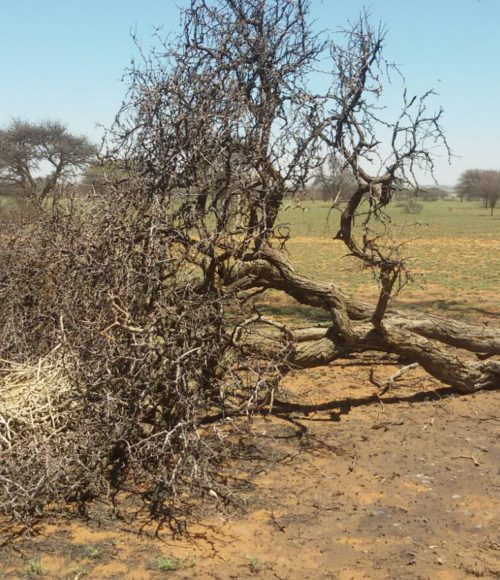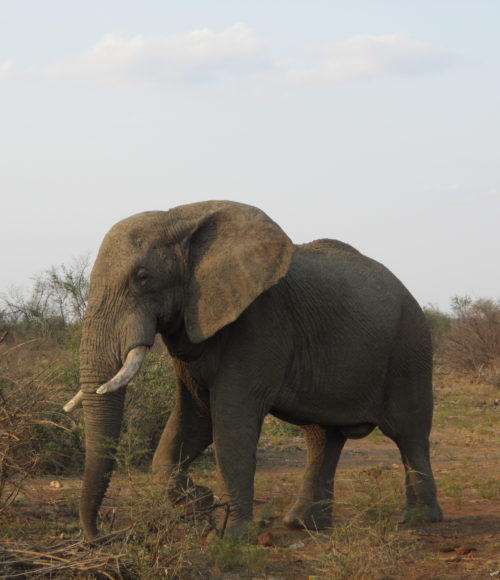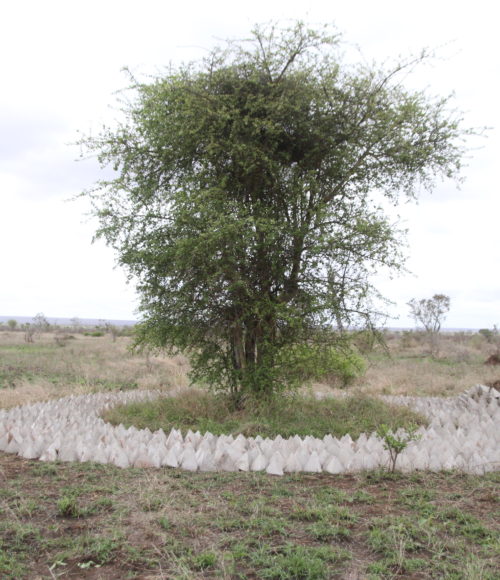
Africa’s largest and arguably most powerful vulture, the Lappet-faced Vulture, can drive away other predators such as jackals and other vultures easily from a carcass. Despite their power and size, Lappet-faced Vultures are listed as Endangered by the IUCN. In the stronghold of Kruger National Park in South Africa, one of their key breeding populations is in decline. The nesting trees selected by this large vulture are often surprisingly small (< 5m/16’) compared to other vulture species and often face an unusual threat: being pushed over by passing elephants. Although the reasons are currently unknown, elephants appear to sometimes target Lappet-faced Vulture nest trees specifically and push them over without browsing them. The impact of elephants on nest trees for these vultures is increasing pressure on their population in Kruger by reducing vital locations for them to breed. This is at a time when every chick is vital, especially as their territories can be over 100km2, contain only a few appropriate nesting trees and they only raise one chick a year!
Our Head of Conservation, Research and Education, Dr Campbell Murn, talks about our Lappet-faced Vulture Project.
We launched this project in 2022. Our Africa Projects Manager, André Botha has been working with South African National Parks to achieve the following objectives:


With the threat to this vital breeding population being so severe we have moved from monitoring the trees to piloting intervention strategies. We implemented our first “tree safe installations” in 2025 to test their effectiveness at discouraging elephants from pushing over Lappet-faced Vulture nesting trees. These are the first trees of our pilot study. The pilot seeks to protect and monitor the progress of the tree safe installations on six trees, before rolling out to more trees if they prove successful.
These tree safe installations involve creating large concrete pyramids and installing them in a ring around the base of the nesting trees. It is a very labour intensive strategy but meets many of our objectives because it creates a deterrent that helps preserve the trees, with little maintenance required and no considerable impact on other species in the short or long-term. We use about 2000 concrete pyramids per individual tree to protect them, with each pyramid costing about £1 to create, with further logistical and labour costs to transport and install the array of pyramids around these trees, deep in the bushveld of Kruger National Park.


Photos by André Botha.
The overall goal of this project is to protect and maintain the nest trees of this Endangered vulture, by finding ways of reducing or preventing elephant impact. Our longer-term goal is assisting the breeding population of Lappet-faced Vultures in Kruger to stabilise and then increase. In the medium term, this project will contribute information and valuable results to Kruger National Park’s ongoing Elephant Management Plan.